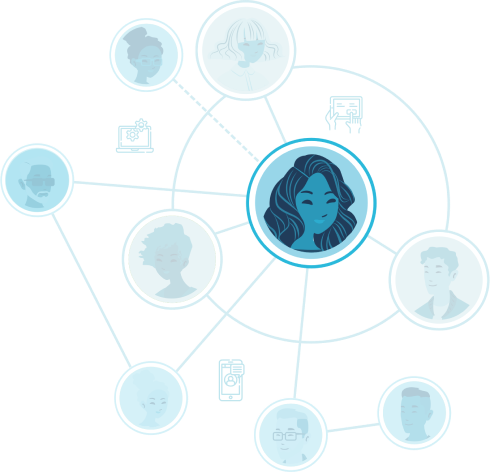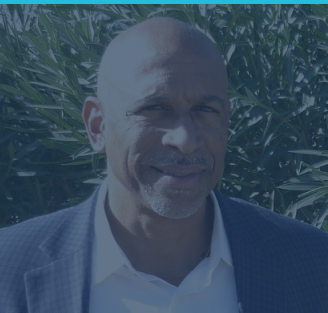Step 1. Take Stock: Getting to Know Who Your Students Know


Guiding questions:
-
How do you currently take stock of the relationships in your students’ lives inside of your school or program? What about beyond school?
-
Who are the people in students’ lives, both inside and outside of school, and what resources—such as support, sense of belonging, and new information and opportunities—are they currently providing?
-
Do students themselves have awareness of the relationships at their disposal and how those relationships could help them accomplish their goals?
-
Reflecting on your current approach to brokering relationships with students, which members of your staff or community do you believe your students feel comfortable reaching out to for support or opportunities? Which relationships could be strengthened or nurtured?

My older brother’s mentor set the path for me and my siblings. A lot of times, that’s the way it works in families: you educate one and then all benefit.”
PEDRO NOGUERA, PH.D., DISTINGUISHED PROFESSOR OF EDUCATION AT THE GRADUATE SCHOOL OF EDUCATION AND INFORMATION STUDIES AT UCLA
Different students will have different needs and interests, and in turn, different sets of relationships. Mapping the relationships students have access to both inside and outside of the classroom can uncover untapped assets for, and overlooked gaps in, their social capital. Institutions committed to getting to know who their students know should measure:
- The number of strong tie and weak tie relationships a student maintains in everyday life
- Where relationships are formed (e.g., school) and with whom
- Students’ awareness of social capital, what it means, and why it matters
-
1
Schools and programs often leave deep reservoirs of social capital, and what researchers call “funds of knowledge,” on the table.
Most schools and programs collect limited information on their students’ networks beyond class rosters, students’ caregivers, or students’ emergency contacts. In other words, students likely have numerous existing, valuable connections in their neighborhoods, faith communities, extended families, or jobs that rarely are connected in a systematic way in support of their educational and career pathways.
-
2
In fact, even students’ existing acquaintances can generate new, expanded opportunities.
When schools and institutions make an effort to understand students’ networks, just asking about their closest friends and mentors won’t tell the whole story. Acquaintances—or what sociologists call “weak ties”—are more likely to contain new information, advice, and opportunities than students’ strongest ties. When taking stock of students’ networks, schools and institutions also should count weak ties.
-
3
Making assumptions about the composition of students' networks based on their demographics can backfire.
Programs designed for entire subgroups can miss critical assets in students’ lives. For example, researchers have found that low-income students arrive at college campuses with different social and cultural capital depending on their high school experiences, rather than just their socioeconomic status. Schools and institutions should ask students about their experiences and networks rather than assuming that all members of a given subgroup have the same assets or needs.
Note: Open the PDF to see a complete list of research citations.

Dr. Helen Heinneman and Father Joe Appleyard didn’t just redirect my life—they filled in whole blanks of white space I wasn’t even seeing on the page and colored it in for me.”
Paul LeBlanc, President of Southern New Hampshire University (SNHU)
Asking students about their existing relationships and networks can paint a clearer picture of what relationships students are actually forging in their day-to-day lives, and the different roles those relationships play. The following strategies can help you “take stock” of whom your students know on a regular basis and better leverage those connections over the course of students’ academic and professional journeys:
Click on the green text to see more.
If you’re trying to better understand relationships inside your school or department → Try relationship mapping protocols with your team and students:
Relationship mapping is a strategy that can help schools adjust their practices to effectively forge trusting relationships between students and adults. All it takes is a roster of student names and two sets of different colored stickers for staff to visualize patterns among whom they feel they have a strong relationship with and whom they believe may be at risk for academic, personal, or other reasons. Larger schools and institutions may prefer to move through the process one grade level or department at a time. You can also perform mapping exercises across both staff and students to compare the results. From there, schools that identify students who lack trusting relationships with adults or faculty can direct additional connections and resources accordingly. For example, watch Ted Dintersmith’s Innovation Playlist to see relationship mapping in action at Jamestown Public Schools.
If you want to understand broader networks that students have access to outside of your school or program → Try social network mapping:
For decades, social workers have used asset mapping, a close cousin to relationship mapping, in order to assess the support networks of their clients. One example is the Social Network Map, developed by researchers Elizabeth Tracy of Case Western Reserve University and James Whittaker of the University of Washington. Their tool helps case managers identify and sort the structure and quality of a client’s support system by mapping relationships into several categories, including family, peers, friends, and co-workers. Researchers recommend doing multiple rounds of relationship or social network mapping because students may forget to include certain connections that make a difference in their lives. You can gain a more complete picture of who your students know and depend on by revisiting relationship and social network maps. Read more about this approach in the article “The Social Network Map”.
If you’re working in a resource-scarce, human capital-scarce environment → Use relationship and networking mapping as a student project to identify latent resources:
Not only does relationship mapping provide more detailed information regarding whom your students know and turn to—it can also surface relationships that you could enlist more deliberately to expand supports or opportunities at your institution. Make sure you have a shared contact database where you can store these connections so that they remain within reach for your community to tap into in the future.
-

Beyond 12 coaches college students to reflect on their existing support networks and how to maintain them.
Beyond 12 is a nonprofit that offers virtual coaching to low-income, first-generation, and historically underrepresented students. The Beyond 12 curriculum includes a specific core content area focused on “Networking and Building Social Capital” in an effort to map who plays what roles across students’ networks. As part of this module, students fill in a chart detailing specific relationships in their lives with people who can help them accomplish their goals. They reflect on the help they receive from various individuals; how frequently they interact; how formal or informal their interactions are; and identifying good “next steps” to continue to strengthen those relationships. For more on the Beyond 12 approach, check out our Beyond 12 case study.
Evidence of impact
85% of students whom Beyond 12 has coached for four years have either graduated or are still enrolled in college.
Sample data collection strategy
Beyond 12 coaches use a checklist to identify the extent to which students are growing their on-campus networks.
- Identify a campus advocate or mentor
- Identify three peers who can serve as references
- Create at least one study group with high-performing peers
-

Big Picture Learning asks students about their existing networks to generate and distribute local internship opportunities.
Big Picture Learning, a national nonprofit that supports internship-based learning high schools, has designed a technology tool called ImBlaze to help schools manage work-based learning contacts and opportunities. But schools don’t just use ImBlaze as a productivity tool; at the start of their semester, Big Picture students are encouraged to upload their existing and new contacts that they have in local businesses through their families, communities, and other networks. From there, students across the school have visibility into the range of opportunities represented across their entire school community—not just limited to their existing, inherited networks. The tool also provides references and records on students’ previous experiences at various internship sites.
Evidence of impact
95% of Big Picture Learning students were accepted into two-year or four-year institutions. 88% of those who did not enroll in college secured full-time employment—with 74% reporting that this employment was facilitated through a mentor or contact from one of their internships.
Sample data collection strategy
Some Big Picture schools administer surveys to students at regular intervals that ask questions such as:
- What adults do you plan to work with today [in your internship]?
- How connected do you feel to the adults you are working with at your internship right now?
What relationships does your school or program deliberately put within reach and emphasize already? What checks and balances are in place to ensure that all students—rather than only those who are the most outgoing—are forging relationships?
Download our guided worksheet to keep track of your progress while going through the playbook.
Customize a plan-
Search Institute’s Relationships Check Tool
This free survey can be used for self-reflection to see where young people’s relationships with educators and staff are particularly strong, and where they can grow. When it’s complete, you’ll receive actionable approaches and activities to strengthen relationships with young people.
-
Making Caring Common’s Virtual Relationship Mapping Strategy
This free tool helps educators and administrators identify perceived positive and stable staff-to-student relationships so they can visualize trends within the school community. Tools for peer-to-peer and staff-to-staff relationship mapping are currently in production.
-
RESCHOOL Colorado’s Learning Map
This free protocol offers guidance for mapping the people, places, and tools involved in student learning.
-
Connect Our Kids’ Family Connections Tool
This tool is free for social workers serving young people in the foster care system. It maps existing and extended family connections and other supports in a young person’s life.
-
Visible Network Labs’ PARTNER Platform
This paid management system and app tracks network size and strength at the individual and organizational level. PARTNERme is a mobile social needs screening and referral tool. It uses network science to make social support and resource networks visible to enable whole-person care.
-
Loom’s Salesforce Map your relationships tool
This paid Salesforce extension application allows users to map and analyze social network connections across their contacts.
-
Big Picture Learning’s ImBlaze internship management tool
This tool is a paid platform for uploading and coordinating internship opportunities.
